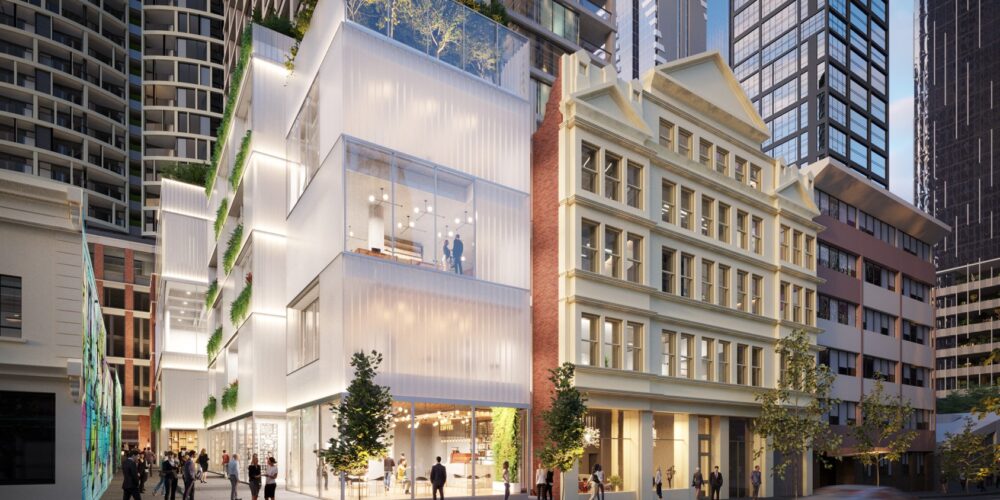
High-end build-to-rent properties can take the heat out of the rental crunch, according to an industry player.
Alt Living chief executive Chrystan Paul says that while luxury build-to-rent apartments do not tackle affordability issues head on, they could help unlock supply constraints in cities experiencing rental crunch.
It follows recent research in Finland that demonstrates the ripple effect of luxury apartments and their downward pressure on rents.
The report shows the addition of new market-rate apartments triggers moving chains that quickly reach middle and low-income neighbourhoods, which is likely to improve affordability.
The addition of 100 market-rate apartments would create about 60 apartment vacancies in the lower half of the income segment, which creates 29 apartment vacancies in the bottom quintile of that income segment.
Paul says central to this concept is upward mobility as a key driver.
“Many renters are aspiring to move up through the rental ladder, whether that may translate into a bigger space or into a newer more modern development with better amenity,” he says.
“From a feasibility point of view I still believe the first generation Build-to-Rent developments will be luxury because that’s what they need to do to build feasibility.
“But if you’re a build-to-rent developer and the market is not willing to meet you at the above-market prices and you’re sitting on empty apartments then that concept of displacement won’t happen.
“Build-to-rent operators must meet the market for it to have the ripple effect.”
Paul believes renters need more education on what the build-to-rent format is and why it attracts higher rents.
“I’m not seeing on the consumer side any kind of education of the market as to why these apartments are being rented at 15 to 20 per cent higher than market value,” he says.
“Research out of the UK demonstrates that if you have a full gym, or a 24-hour concierge, or co-working spaces then the premium prices become a little bit more justifiable.
“It’s about creating supply in areas like inner-city Melbourne where renters can move into build-to-rent developments with all of the amenity and unlock other apartment supplies.”
Paul says he believes the federal government’s plans to boost skilled migrant numbers and immigration will feed into the build-to-rent asset class.
Many migrants will come from countries where long-term renting in cities is commonplace, and even from countries with mature build-to-rent markets.
Alt Living has two build-to-rent development sites in Melbourne currently in the application process awaiting approval.
Paul says he believes construction prices will cool towards the end of the year and they would be looking to break ground next year.
He says the market will “flush out some interesting opportunities” in the pipeline next year as build-to-sell developers look to offload sites.
Paul says markets including Canberra, Perth and Adelaide were starting to stack up as build-to-rent opportunities in the future but more work needed to be done on providing tax concessions for build-to-rent developers.
“We believe new build-to-rent rental supply will start to displace traditional rental supply that is ageing—particularly in the form of strata apartment buildings and ‘red brick’ apartment blocks,” Paul says.
But without tax reform it is hard to get projects off the ground. Developers need deep pockets with build-to-rent projects costing 10 per cent more than traditional residential developments, due to the inability to recover GST costs on build-to-rent projects.
Similarly, MIT withholding tax is creating an additional hurdle for foreign investors, who are levied with a 30 per cent tax rate on build-to-rent projects, whereas purpose-built student accommodation attracts a concessionary 15 per cent tax rate for foreign investors.
“Given the rental shortage playing out in Australia right now, and in the years to come, we believe federal and state governments should look to build-to-rent as a means of driving new supply that will ultimately flow through to help unlock housing affordability to the lower income segments.
“Build-to-rent certainly cannot be seen to be an all-in-one solution, however it does have the ability to help alleviate the stress on the rental market over the coming years.”
Luxury developer Gurner teamed with Qualitas to create a build-to-rent platform in Australia. It recently finalised plans for its first Sydney development, a $450-million, 61-storey tower in Parramatta.
The 2049sq m site at 12 Hassall Street would comprise 385 build-to-rent apartments adding to the partnership’s plans to build out a 5000 build-to-rent apartment portfolio.
According to Charter Keck Kramer estimates, we are facing a shortfall of 163,400 apartments by 2032.
Alt Living’s Chrystan Paul says there are 16,000 build-to-rent apartments in planning or under construction, but more needed to be done to make this asset class stack up in the Australian market.
“In the UK there is 225,000 build-to-rent apartments. If you just do the maths on a per capita basis, we should be looking at 80,000 apartments in Australia.
“We are one of the few developed countries in the world that still has strong migration. There’s no reason we shouldn’t be heading towards 100,000 apartments.
“Melbourne and Sydney are the proof of concept. We need to look at other markets now.”
Paul will join fellow authorities in the sector Rhys Williams, co-founder of UKO, and Jason Goldworthy, co-founder of Novus, to explore setting up build-to-rent projects for success as part of The Urban Developer Build-to-Rent vSummit on August 25.
« Back To News

 Go To Article >
Go To Article >